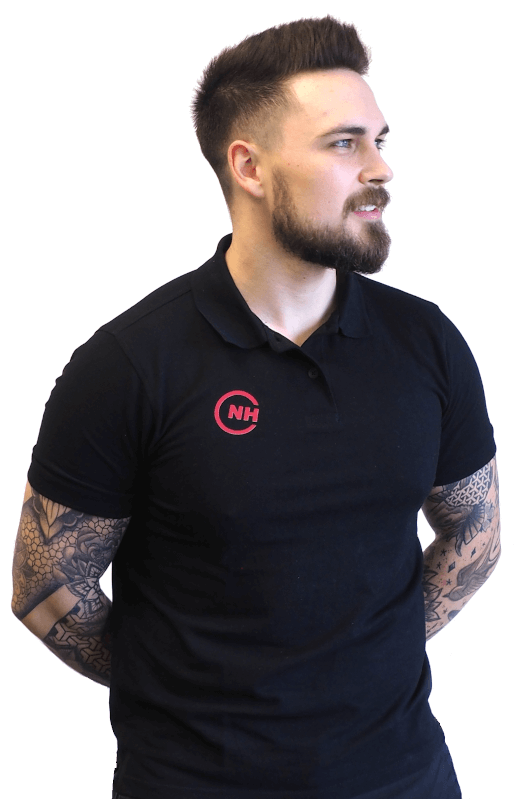Buy O-RINGS | Materials Simply Explained
Everything you need to know about buying O-rings
O-rings are quite inconspicuous technical elements – until they fail unplanned and a replacement suddenly has to be procured.
Expensive machines come to a standstill, hazardous liquids leak out or sensitive products become contaminated and therefore unusable. The generally low price level for O-rings makes it easy for those involved to forget how important they are.
However, a holistic approach to purchasing O-rings helps to reconcile technical requirements with long-term cost-effectiveness.
Material | Temperature resistance | Chemical resistance | Elasticity |
|---|---|---|---|
FFKM | -40°C to +340°C | High | High |
FEP coated | -60°C to +200°C | High | Medium |
FKM (VITON) | -25°C to +200°C | Medium | High |
PTFE | -250°C to +250°C | High | Low |
NBR | -30°C to +120°C | Low | High |
HNBR | -30°C to +150°C | Medium | High |
EPDM | -45°C to +150°C | Medium | High |
SILICONE | -60°C to +200°C | Low | High |
FVMQ | -60°C to +200°C | Medium | High |
FEPM | -10°C to +200°C | Medium | High |
CR | -40°C to +100°C | Low | High |
ACM | -20°C to +150°C | Medium | High |
REQUEST O-RINGS QUICKLY AND EASILY?
Almost any dimension available
Offer received in record time
No minimum order quantities or minimum item values
One contact for all concerns
#1 What matters when buying an O-ring
Moving away from pure parts price fixing and towards a life cycle approach: Especially when O-rings are intended for demanding applications, this is the most efficient approach for purchasing.
To put this into practice, buyers, manufacturers and retailers need to speak the same language. And that starts with the technical properties of the O-rings.
Complete order details leave no doubt as to which O-ring is to be supplied. This brings clarity for all sides. This enables fast logistics processes and avoids disputes. The focus here is primarily on the dimensions of the O-rings and the elastomer material.
#2 Ordering information when purchasing O-rings
The compression of the O-ring in the installation eye is determined during the design. It results from the distance between the two sealing surfaces and the cord thickness of the O-ring.
This cord thickness, or cross-section, is slightly deformed by pressure so that the material gains more contact surface on the components. This also helps to seal components that are positioned slightly off-center in relation to each other due to tolerances.
Accordingly, the cord thickness is the determining dimension of O-rings. Then there is the inside diameter.
In many cases, it is selected so that the O-ring is slightly stretched when it sits in a groove in the inner part of the seal. These technical definitions result in the dimensions, which are generally specified in ID x C/S format. While ID stands for the inside diameter, C/S refers to the cross-section or cord thickness.
The globally recognized ISO 3601 standard provides for this methodology. It also contains a
dimensional list which defines many O-rings in standard dimensions of inner diameter and cord thickness.
However, the designation system can also be used for all O-ring dimensions that do not comply with the standard. The specification in inches or millimeters is common. For an order with reference to ISO 3601 the permissible tolerances are also agreed at the same time.
This is because the standard contains maximum permissible values for dimensional deviations depending on the line thickness.
#3 Selecting the right O-ring material
The dimensions determine whether the O-ring undergoes the necessary deformation in the installation position.
The right choice of material ensures that the O-ring retains its shape and elastic properties over the long term. During operation, O-rings are exposed to temperatures, friction and a wide range of chemicals.
They can migrate into the O-ring and cause it to swell. It is just as possible for components to be released from the O-ring, causing it to shrink and lose elasticity or hardness. These properties are in turn essential for the sealing effect.
Common O-ring materials are based on various elastomers. These in turn have specific technical properties and media resistance.
1. FFKM
FFKM is a very high-quality material for O-rings. It is therefore primarily used for particularly challenging applications. O-rings made of this material are insensitive to many contact media.
There are only a few exceptions across the entire spectrum of air and water, oils and fuels and many chemicals. FFKM O-rings are also mechanically resistant and suitable for a wide temperature range.
2. FEP
FEP O-rings are an attractive alternative to FFKM material when lower maximum temperatures are reached in practical use. Apart from this, FEP offers very good media resistance similar to the more expensive FFKM.
3. FKM
FKM is chemically similar to FFKM. However, the component that is primarily responsible for the media resistance of the is less pronounced in FKM. FKM is therefore somewhat more sensitive to chemicals.
The heat resistance is even lower than that of FEP and is relatively low, especially in contact with water vapor.
4. NBR
NBR O-rings have their strength in their mechanical properties. Above all, the abrasion resistance and high elasticity speak for the use of NBR. However, its use is limited by the media resistance profile. NBR O-rings are frequently used, particularly in the area of mineral oil-based products.
5. EPDM
Sealing elements made from EPDM are primarily used in sanitary and heating installations and in the food industry. This is due to its good resistance to hot water and steam.
EPDM O-rings can permanently withstand temperatures of up to 200 °C in this environment. However, they are susceptible to grease and oil.
The better an O-ring is matched to the actual operating conditions in terms of material selection, the longer the service life that can be achieved.
In addition to specifying the base material, certain material mixtures can also be specified when purchasing O-rings. They are even better tailored to specific requirements.
Details can be found in the manufacturer’s own data sheets for the materials.
#4 Challenges when buying an O-ring
Standardized dimensions and materials make it possible to clearly describe the O-rings. This makes it easier for retailers and buyers to work together and prevents misunderstandings. However, this is by no means the end of the hurdles, as additional problems often arise in practice.
1. Availability
Standard-compliant O-rings are available directly from stock in many sizes: this is standard for O-ring suppliers. If you take this seriously, it places high demands on warehousing.
After all, the ISO 3601 dimension table, for example, provides for several cord thicknesses and many more inside diameters. The range is multiplied by the large number of different materials.
A distinction is made here not only between different elastomers, but also between individual material compounds. This diversity is a challenge for availability.
In addition, there are non-standard O-rings in metric dimensions, imperial O-rings or special sizes. The more specialized the required O-rings are in terms of dimensions and material, the more limited their availability.
Very rare special sizes may not be able to be supplied from stock at all, but have to be produced in a time-consuming special process – with corresponding losses in terms of cost-effectiveness and technical properties.
Our solution:
We only supply O-rings and therefore our stock is full of O-ring dimensions. If an O-ring is not in stock, we can produce any quantity and size for you within 5-6 weeks.
2. Minimum purchase quantity
In order to create a better ratio of logistics costs to revenue in view of the low parts prices, many O-ring suppliers rely on minimum purchase quantities.
In many cases, this involves 5 or 10 pieces, but the minimum order quantity can also take on other dimensions. For customers, this raises the question of how to store the O-rings that are not currently required. They can only be used for the next maintenance if they are stored properly.
Our solution:
You can order your O-rings fromus without any minimum quantities or minimum position values.
3. Tool costs
Special tools usually have to be made for O-rings in special sizes. After all, the predominant manufacturing processes are injection molding and compression molding.
These processes produce O-rings with properties that are sufficiently stable over the entire workpiece. However, they require the creation of a mold that gives the raw material its final shape.
The tool costs for compression molding are lower than those for injection molding. However, this is still very cost-intensive for the production of O-rings in small quantities.
The alternative is butt vulcanization, in which O-rings are bonded from continuous material without tools. However, this results in significant losses in the mechanical strength of the O-rings.
Our solution:
You can order O-rings from us completely free of tool costs. If a tool is required for a dimension, we will cover the cost of manufacturing the tool.
4. Gaps in the product range
One component – one partner: Purchasing endeavors to reduce its complexity and cover its requirements with a limited number of suppliers.
After all, this makes collaboration easier in practice and generally also more profitable. However, this is made more difficult by gaps in supply. If certain materials or dimensions are missing, purchasers have to switch and distribute the purchasing volume across several suppliers.
This in turn leads to more work for the quality assurance of parts and the management of business relationships.
Our solution:
We only supply O-rings and are really good at it. We can supply you with any material in almost any dimension, quantity, color, hardness and approval.
Conclusion: Buy O-rings
The technology defines the technical requirements for the O-rings. However, the purchasing department also has a great deal of leverage: establishing stable supply relationships, ensuring the availability of the required O-rings and maintaining high quality are among its most important tasks.
“I am convinced that we should share our knowledge with the world. I hope I have been able to answer all your questions. If you have any further questions, please feel free to contact us at any time. We will be happy to help you.”

Lord of the O-rings
Author of the sealing academy



